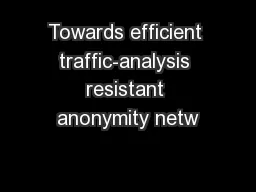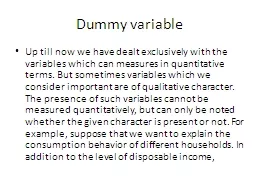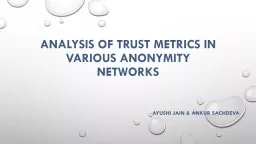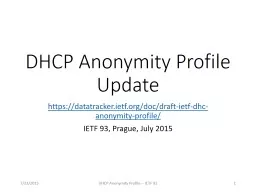PPT-Increasing Anonymity via Dummy
Author : mitsue-stanley | Published Date : 2020-01-29
Increasing Anonymity via Dummy Jondos in a Crowd Author Benjamin Winninger Eavesdropping Attacks Local Eavesdropper An attacker who can view all communication to
Presentation Embed Code
Download Presentation
Download Presentation The PPT/PDF document "Increasing Anonymity via Dummy" is the property of its rightful owner. Permission is granted to download and print the materials on this website for personal, non-commercial use only, and to display it on your personal computer provided you do not modify the materials and that you retain all copyright notices contained in the materials. By downloading content from our website, you accept the terms of this agreement.
Increasing Anonymity via Dummy: Transcript
Download Rules Of Document
"Increasing Anonymity via Dummy"The content belongs to its owner. You may download and print it for personal use, without modification, and keep all copyright notices. By downloading, you agree to these terms.
Related Documents














